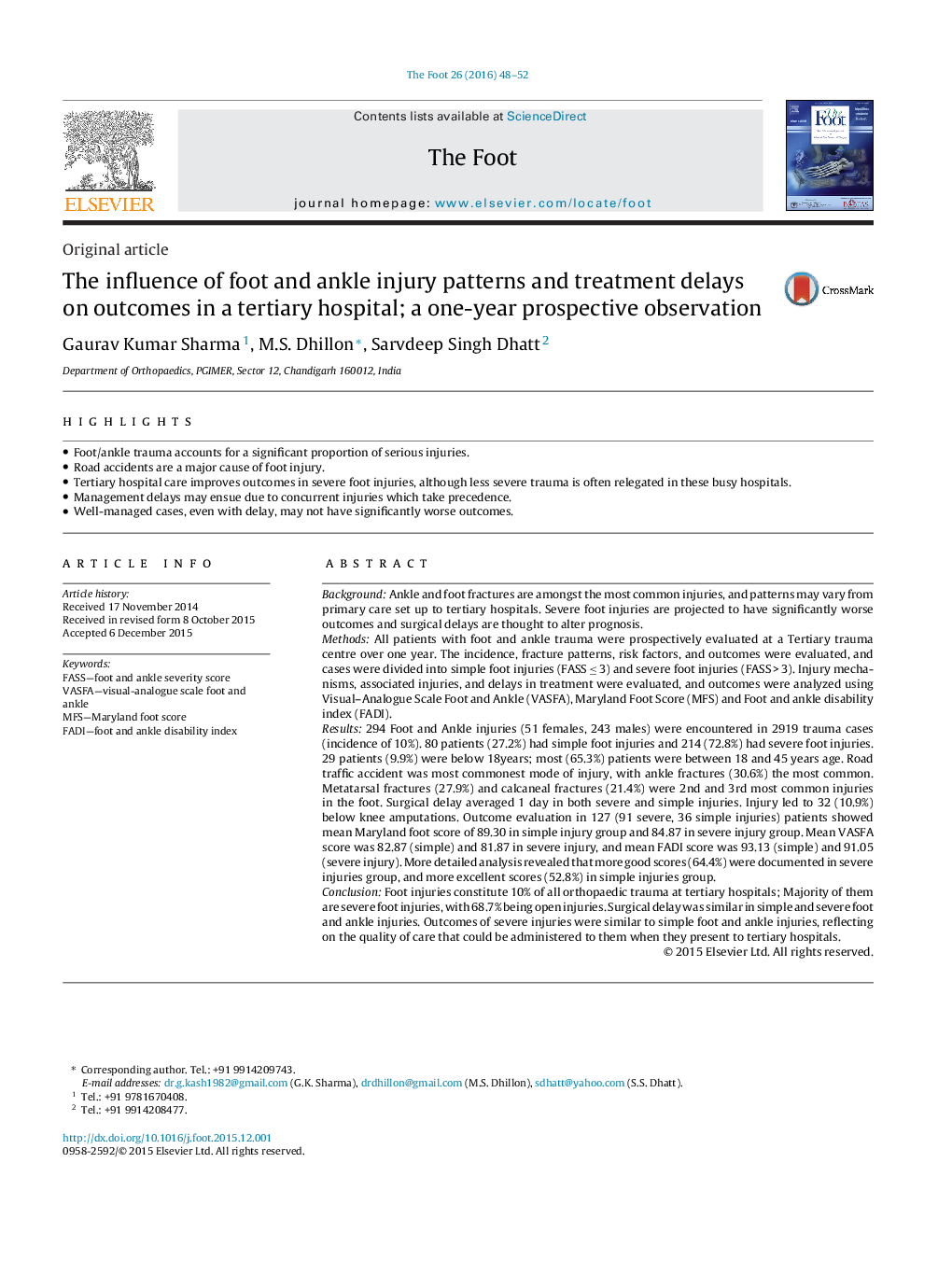| کد مقاله | کد نشریه | سال انتشار | مقاله انگلیسی | نسخه تمام متن |
|---|---|---|---|---|
| 2712679 | 1565476 | 2016 | 5 صفحه PDF | دانلود رایگان |
• Foot/ankle trauma accounts for a significant proportion of serious injuries.
• Road accidents are a major cause of foot injury.
• Tertiary hospital care improves outcomes in severe foot injuries, although less severe trauma is often relegated in these busy hospitals.
• Management delays may ensue due to concurrent injuries which take precedence.
• Well-managed cases, even with delay, may not have significantly worse outcomes.
BackgroundAnkle and foot fractures are amongst the most common injuries, and patterns may vary from primary care set up to tertiary hospitals. Severe foot injuries are projected to have significantly worse outcomes and surgical delays are thought to alter prognosis.MethodsAll patients with foot and ankle trauma were prospectively evaluated at a Tertiary trauma centre over one year. The incidence, fracture patterns, risk factors, and outcomes were evaluated, and cases were divided into simple foot injuries (FASS ≤ 3) and severe foot injuries (FASS > 3). Injury mechanisms, associated injuries, and delays in treatment were evaluated, and outcomes were analyzed using Visual–Analogue Scale Foot and Ankle (VASFA), Maryland Foot Score (MFS) and Foot and ankle disability index (FADI).Results294 Foot and Ankle injuries (51 females, 243 males) were encountered in 2919 trauma cases (incidence of 10%). 80 patients (27.2%) had simple foot injuries and 214 (72.8%) had severe foot injuries. 29 patients (9.9%) were below 18years; most (65.3%) patients were between 18 and 45 years age. Road traffic accident was most commonest mode of injury, with ankle fractures (30.6%) the most common. Metatarsal fractures (27.9%) and calcaneal fractures (21.4%) were 2nd and 3rd most common injuries in the foot. Surgical delay averaged 1 day in both severe and simple injuries. Injury led to 32 (10.9%) below knee amputations. Outcome evaluation in 127 (91 severe, 36 simple injuries) patients showed mean Maryland foot score of 89.30 in simple injury group and 84.87 in severe injury group. Mean VASFA score was 82.87 (simple) and 81.87 in severe injury, and mean FADI score was 93.13 (simple) and 91.05 (severe injury). More detailed analysis revealed that more good scores (64.4%) were documented in severe injuries group, and more excellent scores (52.8%) in simple injuries group.ConclusionFoot injuries constitute 10% of all orthopaedic trauma at tertiary hospitals; Majority of them are severe foot injuries, with 68.7% being open injuries. Surgical delay was similar in simple and severe foot and ankle injuries. Outcomes of severe injuries were similar to simple foot and ankle injuries, reflecting on the quality of care that could be administered to them when they present to tertiary hospitals.
Journal: The Foot - Volume 26, March 2016, Pages 48–52
